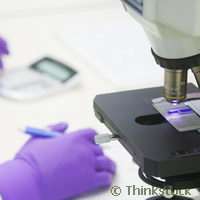Stem cells key to tackling degenerative muscle disease

EU research suggests that the manipulation of stem cells could help to repair damaged muscle tissue. Given the wide range of age-related and degenerative diseases that affect our society today, this could represent a significant breakthrough in healthcare.
Recent advances in EU-funded research, conducted through the ENDOSTEM project, have opened up the possibility that we may soon be able to repair damaged tissue by using stem cells. This has the potential to improve the quality of life of thousands of people.
What makes stem cells unique is their ability to self-renew; i.e. to divide and produce identical copies over and over again. This makes them different to specialised cells - like blood cells - which cannot replicate themselves and can therefore be seriously damaged by disease or injury. While stem cells are found in almost every tissue, they are quite rare; in skeletal muscle for example, they comprise about 5% of all nuclei.
The ENDOSTEM project, which has received nearly EUR 12 million in EU funding, sought to find new ways of stimulating stem cells located in damaged tissue, with the intention of encouraging self-repair. Several project partners have identified the existence of different stem cells that co-exist in skeletal muscle, which could provide a novel source of cells to be exploited to regenerate dystrophic muscles.
Another key focus has been to develop ways of reproducing the physiological signals that facilitate the mobilisation of stem cells. Certain molecules - such as nitric oxide - have been found to enable the physiological activation of stem cells, which can then be used to repair damaged tissues. The ENDOSTEM team has worked to identify the correct signal needed, and then made sure that this can be delivered to the stem cell at a time when the tissue is damaged.
Preclinical studies on selected compounds have been carried out, with two now at the clinical testing stage. These compounds are the combination of nitric oxide donating molecules with the anti-inflammatory drug ibuprofen, and the histone deacetylase inhibitor Givinostat. A study on a third drug - the antioxidant N-acetyl cysteine - has also been finalised, with a clinical trial expected to start in a few months' time.
The research has potential applications for more common degenerative diseases, as well as muscular dystrophy. Muscular dystrophy is a term used to describe a group of genetic disorders that affect different muscles in the body. The condition, which involves the progressive deterioration of muscle tissue, can range from mild to severe. While all types of muscular dystrophy are rare, tens of thousands live with the condition in Europe alone.
One focus of the project has been on cardiac muscle stem cells; in muscular dystrophy, the heart can also be affected. Researchers are confident that better knowledge of how to treat the cardiac-related effects of muscular dystrophy can be translated to more common cardiac related diseases. The five-year ENDOSTEM project is due for completion at the end of 2014.
More information: www.endostem.eu/



















